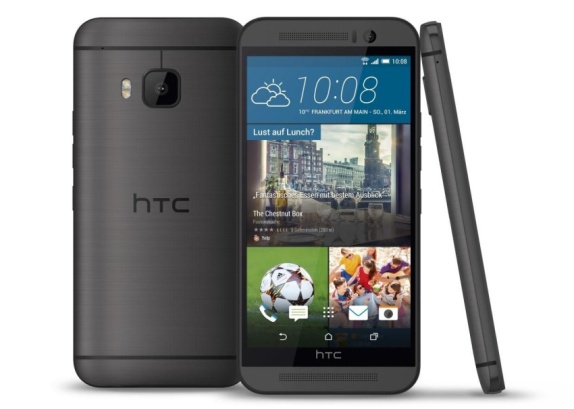HTC’s latest flagship smartphone, the M9 is probably one of the worst kept secrets in the tech industry. The device made numerous appearances in leaked renders and promo videos.


Nevertheless, the Taiwan manufacturer has officially announced the smartphone at its dedicated Mobile World Congress press event in Barcelona.
As it turns out most of the rumor’s that we had seen so far came out to be true. Just like its predecessor, the M9 also sports a uni-body two tone finish and HTC has decided to mostly keep the front design of its last year flagship.
The BoomSound speakers have been retained for one more term and it now comes with Dolby audio surround.
While HTC hasn’t tweaked much with the design layout on the front of the M9 (They’re keeping the big black bar that holds the company’s logo), the back and sides have seen some changes – the sides are now mirror polished while the back is hair brushed to give a distinctive dual tone look (in the silver-gold version). The HTC One M9 also features a bigger camera sensor and there’s a dual-LED flash, doing away with the Duo camera and its faux-effects. The Ultrapixel camera has been moved to the front this time, to let you take better selfies in low light conditions.
From the outset, it’s very hard to distinguish the One (M9) from its previous generation, but thankfully there are some other useful changes such as the power button, which has been moved from top of the device to the right, making it easier to access and the volume rockers are now placed right in middle on the same side.
HTC One (M9) measures 144.6 x 69.7 x 9.6mm and weighs about 157 grams, which is 3 grams lighter than the One (M8). HTC’s latest flagship smartphone sports a 5-inch Super LCD3 display with a resolution of 1080 x 1920 pixels and accounts to a pixel density of 441ppi. While the panel’s size remains similar to what the M8 featured, the screen-to-body ratio has gotten a lot better in M9. There’s a layer of Corning Gorilla Glass 4 protecting the display from scratches and minor sniffs.
Talking about the processing power, the HTC One (M9) runs on Snapdragon 810 chipset that comprises of four Cortex A57 cores clocked at 2.0GHz and another four Cortex A53 cores running at 1.5GHz. All the eight cores have 64-bit support. The Adreno 430 GPU is in charge of the graphics and it should provide better performance as compared to the Adreno 420 accelerator in Snapdragon 805.
HTC One (M9) is equipped with 3GB of RAM and there’s lot of room for multi-tasking. The inbuilt storage is 32GB, but the device will allow expansion by up to 128GB through a microSD card slot.
The camera department is where all the development has happened. HTC One (M9) comes with a 20 megapixel rear sensor that is capable of capturing images at a maximum resolution of 5248 x 3936 pixels. The snapper also has the ability to automatically record videos and images simultaneously.
HTC is also including a new photo editing tool that comes with effects like double exposure. Moving on, the rear camera can also capture videos at 2160p@30pfs which is nothing but 4K resolution and FullHD videos at 60 frames per second. Furthermore, you can also shoot slow-mo videos at 120fps with 720p resolution.
On the software front, the device comes out of the box with Sense 7.0 UI based on Android 5.0 Lollipop. While there is nothing much to write about the sense UI, there are a couple of new software features that deserves a mention. With HTC One (M9) you can create your own themes – you can tweak the home screen wallpaper, choose its color, re-design the icons, set your own sounds for notifications and also choose the font that pleases you.
There’s also something called Sense home widget that displays applications on a widget in the home screen based on your location. HTC also says that they improved the BlinkFeed and it is now capable of serving up meal time suggestions. HTC Connect is another feature that the company likes to talk about – just swipe three fingers on the screen to stream videos or music at connected locations. Apart from these above mentions, there’s not much that has changed from the previous version of Sense.
HTC One (M9) has a wide range of connectivity options such as Wi-Fi 802.11 a/b/g/n/ac, Wi-Fi Direct, Bluetooth 4.0, A-GPS, GLONASS, FM radio, infrared, microUSB 2.0 and NFC. The device supports VoLTE with carrier aggregation and LTE Category 6 speeds. The juice for the HTC One (M9) comes from a 2,840mAh battery and as usual the power source is not user replaceable.
HTC One (M9) will be available in a few select markets starting today and the device will be up for grabs in gunmetal grey with black accents (single tone), silver with gold accents and amber gold option (single tone).
Bharadwaj contributed to this report
